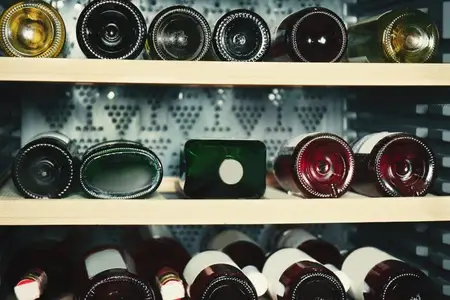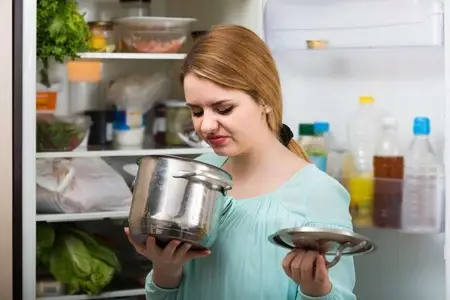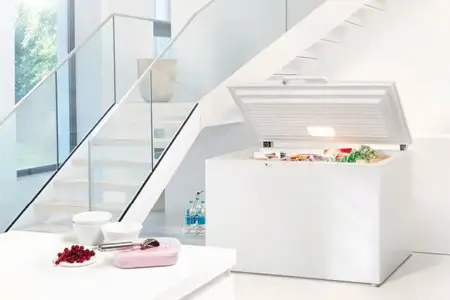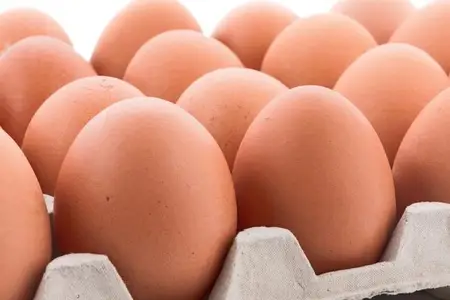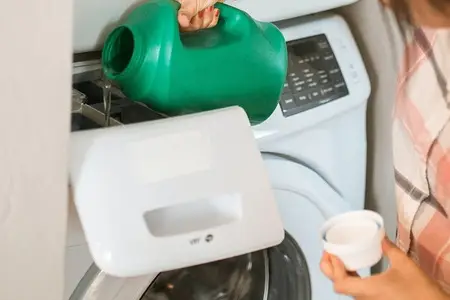In a separate freezer or chest freezer, you can store various foods safely and conveniently for long periods. This requires the right freezer temperature!
When the freezer compartment is too warm, the shelf life of frozen food decreases rapidly. One year or one week? Only with the ideal temperature does your freezer guarantee maximum shelf life! How should I set my freezer? You’ll find answers to this central question here.
We also address why smart users regularly defrost their freezer. Do you have an old appliance that consumes a lot of electricity? Consider buying a new one! We’ll discuss this aspect as well.
Optimal Freezer Temperature: How Cold Should a Freezer Be?
This question is easy to answer: If you want to store your food long-term, you need a freezer temperature of -18 degrees Celsius. Why -18° in the freezer? This value is based on scientific findings about the safe storage of frozen food.
The International Institute of Refrigeration established this guideline back in the 1960s, and governmental and intergovernmental actors adopted it.
The European Community incorporated this standard value into the “Directive for Frozen Foods.” The establishment of this value is also reflected in standardized appliance labeling. Do you want to freeze your food at a minimum of -18 degrees Celsius?
Then you need a freezing compartment that the manufacturer marks with three or four stars. This labeling is based on the following tier system:
- 1 star: minimum -6 °C
- 2 stars: minimum -12 °C
- 3 stars: minimum -18 °C
- 4 stars: minimum -18 °C and colder
If you want maximum shelf life for your frozen food, you need an appropriate freezing appliance. Pay attention to the star rating when making a purchase! If the freezer temperature is too high, shelf life drastically reduces to just a few days or weeks.
Check the information on frozen food packaging: There you’ll find exact details about shelf life in the different star-rated freezing compartments.
Combination Units: What Temperature for the Freezer & What for the Refrigerator?
Many households have combination models with large refrigerator space and few freezer compartments. The same temperature recommendation applies to these appliances as for chest freezers and upright freezers: Those who want to store their food for an extended period should ensure at least -18 degrees Celsius.
For the refrigerator section, different values are naturally relevant, with experts recommending +7 degrees Celsius in the middle compartment.
Is the Freezer Working?
Does your freezer actually cool to -18°C? With an older appliance, it’s worth making sure. A freezer thermometer that displays the temperature in analog or digital form provides valuable help.
Many modern new appliances have an integrated digital temperature display! Whether you measure the freezer temperature with a separate thermometer or use the integrated temperature display for monitoring: If there are deviations, action is needed!
As a first step, try using the temperature control to achieve the desired internal temperature. If the desired result isn’t achieved, you should look for defects such as porous door seals.

Freezer Temperature: How to Save Energy
When you store food at the recommended freezer temperature, it increases your energy needs: The appliance cools the interior to deep sub-zero temperatures, requiring a correspondingly high energy input.
Want to preserve food while minimizing power consumption? Given high electricity prices and climate protection challenges, you should pursue both goals! It’s important to buy a model that suits your needs.
If you’re cooling a largely empty freezer compartment to the ideal temperature, you’re wasting energy! Therefore, consider in advance how much space you need for frozen items. Experts suggest about 50 to 80 liters of volume per person in the household.
However, use these numbers only as a guideline. The actual need depends on your buying and cooking habits. Do you have your own garden and freeze your harvest? Then you should get a larger appliance!
Combination Model or Separate Freezer
This fundamental question is also relevant regarding energy consumption: If you want to store food in larger quantities, there are many reasons to choose a separate unit. Ideally, you should place it in the basement. Lower temperatures there compared to living spaces result in reduced cooling needs. Also consider whether you want to buy a chest freezer or an upright model:
- Chest freezer: The advantage lies in energy efficiency. Chest freezers are known for their spacious storage capacity.
- Upright freezer: While less energy-efficient, it requires less floor space. If you’re positioning your freezer in the kitchen, an upright model proves to be the better choice.
Living alone? For single households, a combination unit with one to three freezer compartments is sufficient. The same applies to two-person households, provided they buy or freeze limited amounts of frozen food.
Regular Defrosting of Freezer
You know the problem: Over time, an ice layer forms in your freezer compartment. This nuisance occurs regardless of temperature and is based on excessive humidity. There are two causes:
- Food items introduce moisture into the freezer area.
- When opening the freezer, room humidity enters the freezing compartment.
Ice layers reduce cooling efficiency and increase energy requirements. In the worst case, your unit might not reach the recommended freezer temperature while consuming above-average electricity. With an ice thickness of one centimeter, power consumption increases by approximately 10 to 15%.
Avoid this by regularly defrosting the freezer area. This action should be performed once or twice a year. In some cases, more frequent defrosting may be recommended. For instance, ice forms more quickly if the air humidity in the living space or basement is high.
This leads to an obvious question: How do you defrost your freezer without endangering the frozen goods?
Ideally, store the food in a neighbor’s or friend’s freezer. This guarantees consistent optimal temperature. Alternatively, temporarily store the frozen goods with ice packs in your refrigerator.
Defrosting your unit in winter during low outdoor temperatures? Perfect timing! During freezing temperatures, you can also store food items on your windowsill, balcony, or terrace.
Buying a Freezer or Chest Freezer: These are the Advantages of New Units
Want to maintain the recommended freezer temperature permanently – with low power consumption, simple handling, and user-friendly temperature monitoring? Then considering the purchase of a new freezer unit is worthwhile.
Innovative models feature high energy efficiency and modern technologies. Worth mentioning is the No-Frost function in high-quality units. A fan circulates air in the freezer compartment while removing humidity.
This reliably prevents ice formation, making defrosting a thing of the past! Additionally, manufacturers have invested heavily in energy-efficient technology in recent years, responding to increased environmental awareness among consumers. Compared to older models, new units require significantly less power. Check the EU energy label of each unit!
This standardized labeling simplifies selection. Check the energy consumption and compare other specifications, such as maximum noise levels. Before purchasing, also consider ratings from independent testing institutes and consumer magazines. You’ll find that brand models like Liebherr freezers excel in tests!
